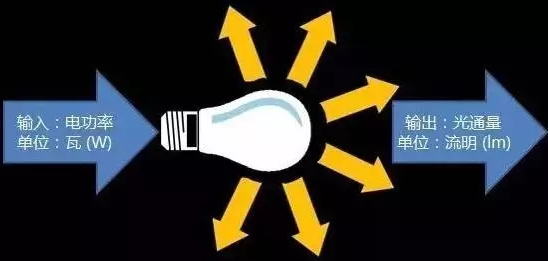As the saying goes, Wanzhang Tall Building is on the ground. Only by fully grasping the most basic knowledge, can we be as good as fish in water in the project implementation. So let's start with the basic knowledge today. We know that there are electric flux concept in electricity and magnetic flux concept in magnetics, so there are optical flux concept as well. For the first two "flux" concepts, I believe you are quite familiar with it, but for the "flux" concept, some people may not be so familiar with it.
For this reason, today we will elaborate on what is the light flux and the relevant knowledge of the light flux.
What is light flux?
We used to pay attention to the wattage of lamps, after all, most of them like to be on, but now the LED era is different, wattage value is large, not necessarily the light on oh.
Why?

In recent years, due to the rapid development of LED, the same brightness (lumen value), incandescent lamp may consume 85W of power, while the LED only needs 12W, so using wattage to judge the brightness of the lamp has not met the requirements, more importantly, to see the light flux.

Light flux diagram.

▲
A 100W light bulb emits a total luminous flux of about 1000 lm.
Luminous flux, you can understand as "the quantity of light". To put it plainly, it is a measure of how much light a lamp can emit. The higher the lm, the more light it emits.
Light Flux and Power
The relationship between light flux and power is well understood. For example:
If we buy a car in our life, will you buy a car with good performance or a lot of fuel? Some people may want a 4.0-displacement car.
OK, then this "Rural Bugatti Veyron" absolutely consumes enough fuel:
This "performance" can be understood as light flux, and "fuel consumption" refers to power.

